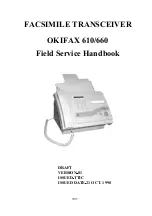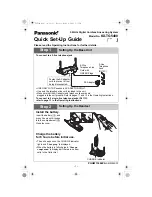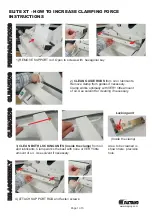
FREE-MOTION EMBROIDERY
In free-motion embroidery, you control the
direction and speed of fabric movement by
means of an embroidery hoop. Stitch length is
determined by the speed at which the hoop is
moved and zig-zag stitch width is varied by
the direction of hoop movement. The hoop
should be one designed for machine use.
• Stitch; Plain Zig-Zag § (or Straight Stitch | )
• Stitch Width: 2 through 5
(or Straight Stitch)
• Needle Position:/^
• Speed Range:
MIN
• Feed Cover Plate (See page 5 for attaching)
• No Presser Foot or Shank
Monogramming with Plain Zig-Zag Pattern
Hesitation Embroidery
1. Attach feed cover plate.
2. Trace or transfer design outline to right
side of fabric and center in embroidery
hoop. Make sure fabric is taut.
3. Raise presser-foot iifter to its high position,
place hoop under needle and lower presser
bar to engage thread tension.
4. Hold needle thread loosely with ieft hand,
turn hand wheei over, and draw bobbin
thread up through fabric.
5. Lower needle into fabric, hold thread ends
and start stitching. After two or three
stitches, cut thread ends.
6. Run machine at an even rate of speed,
following or fiiling in design outline as ap
propriate. Move hoop rapidiy to increase
stitch length and change the direction of
hoop movement. To shade change zig-zag
stitch width from wide to narrow.
HESITATION EMBROIDERY
• Stitch: Straight i
• Stitch Width: 5 only
• Needle Position:
• Stitch Length: 0
• Speed Range; MIN
• Feed Cover Plate (See page 5 for attaching)
• No Presser Foot or Shank
Hesitation embroidery is free-motion embroi
dery done at machine settings used for speed
basting (except stitch iength). The time iapse
that occurs between needle penetrations per
mits unhurried hoop movement (appreciated by
the beginner), it also permits unusually long
stitches, as weii as short ones for unique
decorative effects.
1. Attach feed cover plate, as
instructed on
page 5,
and set machine for speed basting.
See page 28.
2. Trace or transfer design outline to fabric
and center in embroidery hoop. Designs
and motifs with shaggy outlines and tex
tured surfaces are usually best.
3. Position hoop under needle, lower presser
bar, and raise bobbin thread.
4. Move hoop back and forth, filling design
with long and short stitches as in regular
free-motion embroidery.
56
Instrukcje obsługi maszyn do szycia firm Polskich jak i zagranicznych np. Singer Toyota Pfaff Gritzner Łucznik Arka
















































